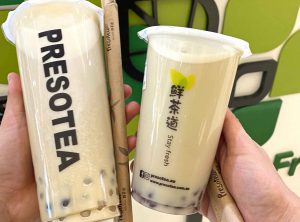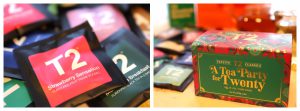MENU
MENU
Tea Growing Areas: Queensland, New South Wales, Western Australia, Victoria and Tasmania
Types of Tea: Black tea, green tea, flavored tea, etc.
Multi-culture and diverse tea culture
The population of Australia is made up of indigenous people and migrants from all over the world, making Australia a truly multicultural society. The tea and food culture is as varied as the population.
Large cities like Perth have several dainty tea shops in which you can purchase and taste tea from Japan, China, India, Sri Lanka and more. You can also find tea grown in Australia in grocery stores and supermarkets at reasonable prices.
From enjoying dim sum served with Chinese tea in Chinese restaurants, you can experience many different tea cultures found in Australia.

Perth (June 2021)

A tea shop, Teaessential in Perth (June 2021)
Japanese tea in Australia
Japanese matcha is very popular and is drunk quite often. In Teaessential, you can order sweet matcha-yuzu iced drinks and matcha lattes. Matcha-yuzu combines the delicate taste of matcha with the refreshing aroma of yuzu. The drink is best enjoyed in the hot summer weather. There’s even a choice of adding a cream topping for extra decadence.

Yuzu matcha cream and matha latte at Teaessential (June 2021)
The wide variety of Bubble Tea
In the last few years, since around 2018, tapioca tea has become quite popular in Japan. It’s known as Bubble Tea in Australia and is very popular here as well among young people.
There are many kinds of tea to choose from including green tea, genmaicha (green tea with roasted rice), hojicha (green tea which is steamed and roasted), oolong tea, black tea, jasmine tea, fruit tea, etc. There are also a variety of toppings to choose from such as jelly, agar, red beans, tapioca pearls, etc.
You can also pick the temperature of each drink (warm, iced and hot,) along with the amount of ice (regular ice, less ice and without ice). There are five levels of sweetness to choose from: Regular (100%), Less (75%), Half (50%), Light (25%) and No sweetener (0%). This is typical of Australian society, with Tea shops giving customers a choice, allowing them to make an original tea based on their preferences.
Some tasty recommendations are hojicha milk tea with tapioca pearl topping and genmai milk tea with red beans. Milk tea with tapioca tastes has a gentle creamy flavor, and genmai milk tea is a relaxing drink.

Genmai bubble tea and hojicha bubble tea at PRESTOTEA in Perth (June 2021)
Nerada Tea grown in Australia
It is not well known, but tea is actually grown in Australia. Not only Australian brands but also large Japanese tea and drink companies own tea fields.
Nerada, an Australian tea company, grows black tea leaves in their own tea fields. Nerada tea was first founded in 1882, when four brothers started growing their own tea in Bingil bay, north of Queensland. After this, cyclones destroyed their tea plantations and all the tea was lost. However, in the 1950s, migrants from India re-established the tea fields and regrew the tea. The Nerada Estate was established and tea production began in earnest.
In the present day, Nerada Tea prides itself on 100% Australian-Grown black tea. Nerada Tea is a part of the Rainforest Alliance, signifying sustainable agriculture.

Nerada’s black tea grown in Australia
T2, a fashionable tea shop
T2 is a fancy tea shop originating from Melbourne, Victoria. T2 sells black tea, green tea, herbal tea, and fruit tea from all over the world. They also sell tea based merchandise like bright and colorful teapots and tea cups. The aesthetic packaging of the tea is perfect for a gift.

T2’s various types of tea
Except for the Nerada Tea grown in Australia and T2 sections, this article was written, and the photos were provided by Tomoko.
Tomoko is a Japanese woman who lives in Perth.
Reference:
Teaessential https://teassential.com.au
Nerada Tea https://neradatea.com.au
T2 https://www.t2tea.com
*When visiting the shops and facilities introduced in this article, please check the business hours on their website, etc. before visiting.
*The information provided on this site may be updated. If you find any information in this article that is incorrect, new, or incomplete, please contact CHAMART.
*The site does not describe all “Teas of Japan” or all “Teas of the World”. Additionally, each article expresses the writer’s personal experience and feelings.